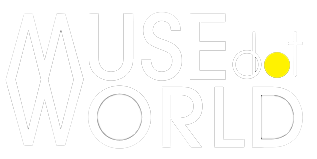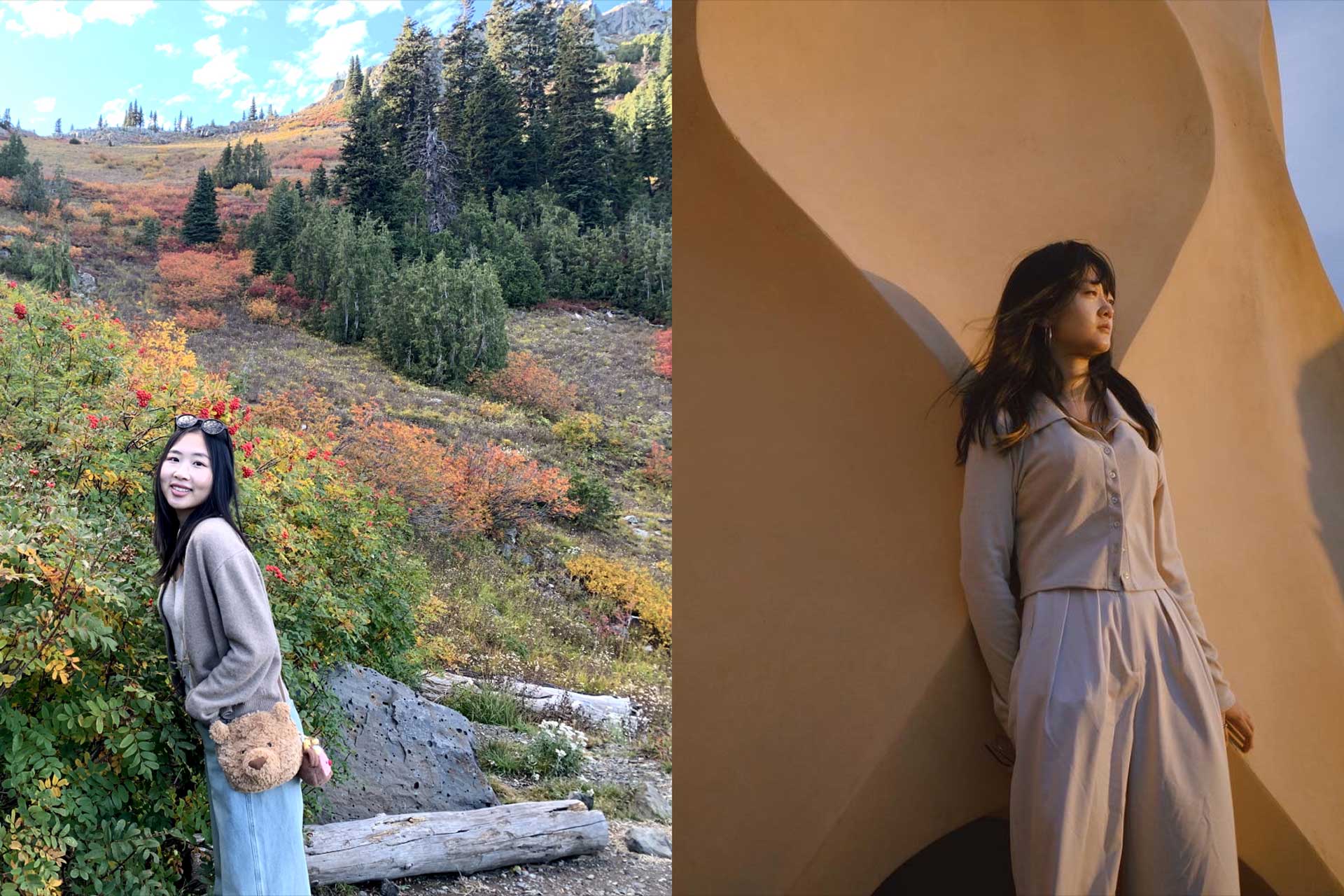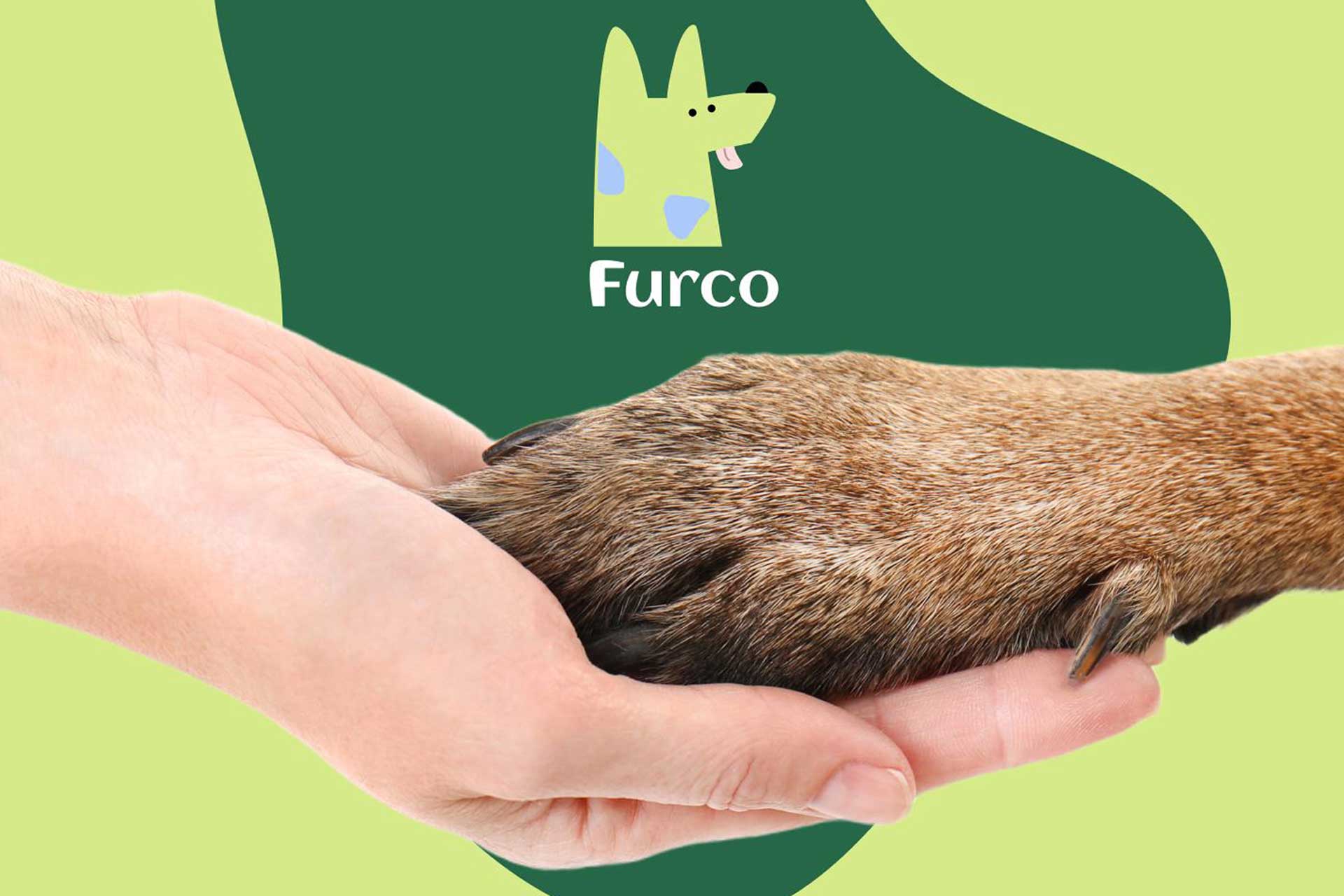Baoqi Ding and Chuoer Liang, The Minds Behind Furco’s Success in Pet Care
Baoqi Ding and Chuoer Liang
Baoqi Ding and Chuoer Liang are UX designers with distinct expertise and a shared passion for innovation. Baoqi specializes in AI-driven products, contributing to QuillBot at Learneo, while Chuoer focuses on e-commerce solutions at Inmar Intelligence, designing features that drive sales and customer loyalty. Together, they collaborate on side projects like Furco.
Baoqi: I am a UX designer specializing in AI-driven products. I initially studied accessory design in my undergraduate years, where I discovered my passion for user experience during my thesis project. I created a wearable piece that interacted with users' emotions, blending technology and design.
This project sparked my transition to UX, pushing me to focus on human-centric design during my master's studies. Since then, I've worked with companies across various sectors, from finance to healthcare. My experience as a product designer has allowed me to craft solutions that positively impact users' lives.
Chuoer: I’m a UX designer with a strong focus on e-commerce products. Through my master’s program in human-centered interaction and UX, I’ve gained valuable insights into creating intuitive and impactful user experiences.
I’m passionate about crafting user flows that not only solve users' pain points but also drive business outcomes. I have extensive design experience in both the e-commerce and finance industries, where I’ve consistently advocated for users at every stage of the design process.
Baoqi: Since childhood, I've always been drawn to sketching and creating things from scratch. My fascination with turning ideas into tangible outcomes led me to pursue a creative path. I believe design can influence the world. The desire to create solutions that positively impact people's lives ultimately guided me toward UX and product design.
Chuoer: I started my career working at an airline in Seattle, where I enjoyed helping passengers worldwide. However, I noticed that many people were facing the same challenges repeatedly, such as navigating flight transfers and dealing with delays.
This sparked a curiosity in me—how could these processes be improved to enhance the customer experience? This realization led me to explore UX design and pursue a master's program in UX and human-centered interaction, where I deepened my understanding of creating user-driven solutions.
What excites me about UX is the opportunity to address real pain points for users while creating solutions that also benefit businesses. Coming from a customer-facing background, I naturally gravitated toward a user-centric approach. My experience has allowed me to better empathize with users and design solutions that truly solve their problems across the customer journey.
Baoqi: Currently, I work with Learneo. One of the products that I am working on is QuillBot, an AI-powered writing tool that helps users enhance their writing skills. As part of the App & Extension team, I contribute to delivering a seamless experience for over 35 million global users.
Additionally, I work on side projects like Furco. My projects center around empowering users and creating intuitive, thoughtful designs that enhance their everyday experiences.
Chuoer: Currently, I work with Inmar Intelligence as a product designer. I design e-commerce solutions for retailers to help them increase business value, driving sales and long-term customer loyalty. I specialize in creating optimized user flows and integrating innovative features to ensure seamless, efficient experiences.
In addition to my work at Inmar, I’m also involved in side projects like Furco, which I develop with Baoqi. Furco is an AI-driven app that empowers pet owners by offering personalized breed recommendations based on lifestyle, connecting them to local community events and resources, and providing essential support for responsible rehoming when needed.
Baoqi: Design is about problem-solving with empathy. It's creating solutions that are functional and meaningful, enhancing people's experiences by making things intuitive, accessible, and beautiful.
Chuoer: To me, design is about shaping experiences that solve real problems. Design is not just how something looks, but how it works and how it makes people feel. It’s about making things better, easier, and more meaningful, while also driving value for the business.
Baoqi: My favorite kind of design is user experience (UX) design because it directly impacts how people interact with technology and products in their everyday lives. I love the challenge of creating intuitive, human-centered solutions that make complex processes feel effortless. Designing experiences that empower users, improve their efficiency, and bring them a sense of ease and confidence is rewarding.
Chuoer: User experience (UX) is my favorite kind of design. It allows me to combine creativity with problem-solving, crafting interfaces and features that feel intuitive and engaging. What excites me most is the impact—seeing how a well-designed product can make a real difference in users' daily lives, while also contributing to the success of a business. It’s the perfect intersection of art, empathy, and strategy.
Baoqi: For me, a good design aims to solve users' painpoints and efficiently balance between outcome and output. On some level, a good design is non-biased and fully considered from a user perspective instead of a designer's or business perspective. We can always feel the focus on understanding the user's fundamental pain points and collaborating with them at the core of a good design.
Chuoer: To me, a "good" design is one that seamlessly balances functionality, aesthetics, and user needs. It’s intuitive, solving the user’s problem without them even realizing it. Beyond just looking visually appealing, it must be purposeful, ensuring that every element serves a clear function.
Baoqi: My creative style is explorative and rooted in interaction. I did a social interactive project before where strangers were invited to interact with a machine designed to reflect on data privacy issues. I focus on creating experiences that provoke thought and invite participation. I aim to involve users meaningfully, ensuring the design has purpose and impact.
Chuoer: My design style is user-centered and rooted in simplicity. I approach design from multiple perspectives, considering both the user's needs and the broader business goals. By focusing on clarity and functionality, I aim to create experiences that are intuitive and accessible while maintaining a clean aesthetic.
Baoqi: My design begins with thorough research and a deep dive into understanding the users. I prioritize gathering meaningful insights directly from potential users to ensure my designs address their needs. For example, while working on a project with individuals experiencing homelessness, I discovered that most owned a smartphone, which led me to focus on developing a mobile app.
This experience reinforced the importance of involving users in the design process, ensuring we design with them rather than for them, and avoiding assumptions and biases.Chuoer: My design process starts with understanding the problem and the users through research, which helps me gain a deep understanding of their needs and pain points. Once I have clear insights, I move into the ideation phase, brainstorming solutions and sketching out initial concepts.
Next, I create wireframes and prototypes, focusing on usability and ensuring the design flows intuitively. I believe in rapid iteration, so I continuously test and refine my designs based on user feedback and team collaboration. Throughout the process, I maintain open communication with cross-functional teams to align with business goals and technical feasibility.
Baoqi: Absolutely! Growing up in China, I was influenced by traditional art forms like calligraphy and ink painting. These art forms have taught me the beauty of minimalism and balance. Concepts like yin and yang have shaped my approach to design—emphasizing harmony between form, function, and the human experience.
Chuoer: Yes, I believe China and its cultural heritage have a significant impact on my design process. Growing up in a diverse cultural environment has made me more attuned to different perspectives and the importance of inclusivity in design. It has taught me to value simplicity, functionality, and storytelling, which influence how I approach design.
Baoqi: Winning the 2024 MUSE Design Awards is a huge achievement for me and my team. It recognizes our collective effort to push for a better design and user experience for humans and other lives living on this planet. It's a testament to our commitment to innovation and reinforces the importance of collaboration in our creative journey.
Chuoer: Thank you! Winning the 2024 MUSE Design Award is an incredible honor for me and my team. It’s a validation of the hard work, creativity, and dedication we’ve put into our projects. For our team, it’s a proud moment that showcases our collaborative efforts and passion for creating meaningful user experiences. It motivates us to continue pushing boundaries and elevating our work to even higher standards.
Baoqi: We entered Furco, a comprehensive solution to enhance and enrich your pet's life. Our AI-powered app offers personalized breed recommendations tailored to your lifestyle, connects you with local events and resources, and provides essential support when rehoming is needed.
More than just an app, Furco is a tool for creating a positive impact, helping to lower euthanasia rates through responsible rehoming practices.
Chuoer: Our winning entry, Furco, is an AI-powered platform designed to manage and enhance pets’ life journey. Furco addresses the diverse needs of pet owners by offering tailored features, from helping beginners choose the right breed based on their lifestyle to tracking pet milestones and providing customized event recommendations.
What truly sets Furco apart is its ability to assist in more challenging situations, such as rehoming pets, ensuring that every pet can find a loving home if circumstances change. We are especially proud of Furco’s impact on educating pet owners, helping to reduce pet abandonment by promoting responsible ownership, and providing resources on pet care and behavior.
Baoqi: One of the biggest challenges was connecting the user journey since we have two target groups, the pet owners and the pets. Being user-centric means we have to consider both groups at the same time. We created a flow chart that lists user actions, and then we thought about connecting each step better and making it a more seamless journey.
This is when we have the concept of making rehoming a part of the story, where pet owners can find their pets lovely new homes when they cannot keep them in some situations.
Chuoer: The biggest challenge with this project was simplifying the user flow while ensuring the app is intuitive and easy to use. Finding the right balance between delivering powerful features and ensuring a seamless, user-friendly experience was important, and it took several iterations to achieve.
Baoqi: Winning the MUSE Design Awards has opened new doors for collaboration and projects. It boosted my professional profile and provided opportunities to work with like-minded creatives across industries. It's a mark of credibility that motivates me to continue pushing boundaries in my work.
Chuoer: Winning an award has been a pivotal moment in my career, providing both recognition and validation. The award has also strengthened my confidence in my design approach and reinforced the importance of user-centered design. It has inspired me to push creative boundaries further, continue refining my skills, and take on new challenges with greater ambition and focus.
Baoqi: I love the dynamic and fast-paced UX industry—there's always something new to learn. I also appreciate the focus on human-centered design, ensuring that creativity serves a purpose. Lastly, the collaborative nature of the industry, where different perspectives and expertise come together, makes every project a learning opportunity.
Chuoer: I would say innovation, collaboration, and user impacts. I love how the design industry encourages constant creativity and pushing boundaries to find new solutions. I also enjoy working with cross-functional teams to gain different perspectives. Most importantly, I feel fulfilled by enhancing user experiences and solving real-world problems through design.
Baoqi: China is unique because it blends deep cultural heritage with rapid technological advancements. This unique combination offers designers a rich source of inspiration and the opportunity to work on cutting-edge projects.
Chuoer: China's deep history of craftsmanship, art, and philosophy influences modern design, while the fast-paced growth in digital industries pushes for innovation and user-centric solutions.
Baoqi: I see a future where AI and creativity merge more closely, providing hyper-personalized solutions. Ethical design will also take center stage as consumers demand transparency and responsible use of technology. AR and VR will likely redefine user interactions, creating immersive experiences that push the boundaries of creative expression.
Chuoer: In the next 5-10 years, I see the design industry moving towards deeper integration of technology, with AI, AR, and VR revolutionizing how users interact with products and services. Designers will also prioritize inclusivity and accessibility, ensuring products serve diverse audiences more effectively. The design industry will evolve to become more human-centered, technologically advanced, and socially responsible.
Baoqi: Don't be afraid to experiment and make mistakes. Also, building a network and seeking collaborations, as teamwork, can spark innovation unexpectedly. Lastly, think about the sustainability of your projects and try to impact our world positively.
Chuoer: My advice is to embrace continuous learning by staying up-to-date with the latest trends, technologies, and tools. Focus on building a strong foundation in user-centered design, always prioritizing the needs and experiences of the user.
Baoqi: I recommend exploring platforms like Coursera for structured learning and Dribbble for visual inspiration. Books like "Speculative Everything" are also great for broadening your mindset on design's future role. Joining design communities like Figma can also provide valuable insights.
Chuoer: I’d recommend taking UX courses on online platforms, like Coursera and Udemy. I’d also recommend listening to podcasts like "Design Matters" and "The UX Podcast".
Baoqi: I am an introvert with an adventurous mind. I like surfing, boxing, and climbing. It feels so free when I immerse myself in adventures, and I greatly enjoy that process. They are all my stress relievers.
Chuoer: One thing I haven’t shared before is my passion for traveling and immersing myself in local neighborhoods. I love observing how people live and experiencing different cultures, as it gives me a deeper appreciation for diverse perspectives. These experiences have taught me to approach things with an open mind and a broader understanding of different viewpoints.
Baoqi: I'm inspired by the guests on my podcast, who come from diverse backgrounds and share their experiences in art, technology, and design. One of our recent discussions with three other UX designers was about how cultural differences impact digital experience and what can be defined as a successful localization. We had so many great conversations and discussions, inspiring me often.
Chuoer: My greatest inspiration has been my mom. She always demonstrated a strong work ethic and resilience, expressing her creativity through art. Despite facing many challenges, she remained positive and resourceful, teaching me the importance of resilience. She showed me that passion and hard work are key to achieving success and making a meaningful impact, and her example continues to inspire me in my career.
Baoqi: The key to success in design is empathy. Always listen closely to users and understand their pain points. You can create innovative and meaningful solutions by keeping the user at the heart of your design process.
Chuoer: My key to success has been a combination of curiosity and persistence. Persistence is crucial—design is an iterative process, and not every solution works on the first try, but pushing through challenges is what leads to meaningful results. As for parting words of wisdom, I’d say: Never stop growing, and remember that the best designs are those that truly make a difference in people’s lives.
Baoqi: I want to emphasize the importance of lifelong learning. Whether through collaboration or independent projects, it's crucial to remain curious and continually push your creative limits.
Chuoer: I’d just like to add that I’m truly passionate about the design industry and excited about where it’s heading. I believe design has the power to make a real impact, and I’m committed to continuing to create solutions that not only solve problems but also enrich people’s lives.
Baoqi Ding and Chuoer Liang
Baoqi Ding and Chuoer Liang are UX designers with distinct expertise and a shared passion for innovation. Baoqi specializes in AI-driven products, contributing to QuillBot at Learneo, while Chuoer focuses on e-commerce solutions at Inmar Intelligence, designing features that drive sales and customer loyalty. Together, they collaborate on side projects like Furco.
Explore the journey of Oksana Butman, a Silver Winner in the 2024 MUSE Design Awards. She is an award-winning designer, and a conceptual artist with a unique perspective shaped by her background in mathematical and creative education. Her work has been featured in 25 Beautiful Homes, Tatler, and Interior + Design.




